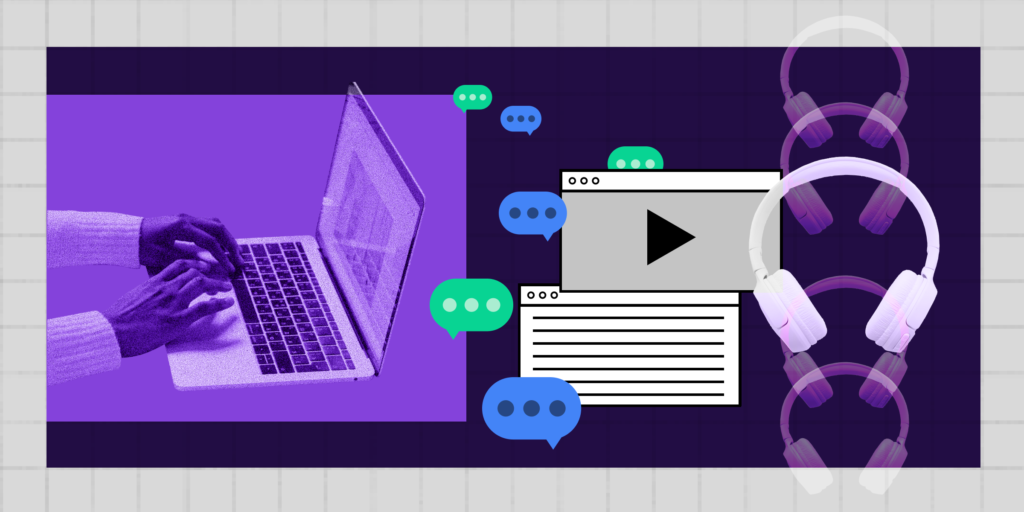The three rhetorical appeals — ethos, pathos, logos — were defined by Aristotle hundreds of years ago, but they’re just as relevant today as in ancient times.
The term ‘rhetoric’ often gets a bad rap, since in modern times it’s associated with obscuring the truth. But Aristotle’s rhetoric instead relates to “the ability to see or identify in any given circumstance the available means of persuasion.”1
This ancient art, often employed by writers, advertisers and politicians, can also be used in the classroom to inform, educate and persuade — and help you better connect with students and the material you’re teaching.
What are ethos, pathos, logos?
The three rhetorical appeals
Logos (λογος) is the use of logical argument and empirical evidence to support your point of view. You appeal to students’ sense of reason by drawing upon facts, research, statistics, credible sources and even inherent logic itself.
Ethos (ηθος) is the use of ‘ethics’ — which, unlike our modern usage of the word, refers to your credibility or authority on a subject. As an instructor, you likely have some inherent Ethos, but you could also draw on the ethos of others, such as citing results from a research paper.
Pathos (παθος) is the use of ‘pathetic appeal,’ which in Aristotle’s time meant appealing to people’s emotions or sense of identity. If you can make students feel an emotion, or appeal to their sense of identity, you’re using pathos. (It’s not about the emotion you are feeling, but what emotions you are evoking in others).
Using pathos, ethos and logos
To persuade an audience, we typically use a combination of the three rhetorical appeals. In academia, logos and ethos—reasoning and authority—tend to be given more weight than pathos: an academic paper based primarily on pathos, for example, probably wouldn’t be taken seriously. By the same token, if you only present the cold, hard facts, you could quickly lose students’ attention. And if your arguments are overly emotional rather than factual, you could lose your credibility.
“We employ rhetoric whether we’re conscious of it or not, but becoming conscious of how rhetoric works can transform speaking, reading, and writing, making us more successful and able communicators and more discerning audiences. The very ordinariness of rhetoric is the single most important tool for teachers to use to help students understand its dynamics and practice them,” according to a paper by The College Board.2
Understanding rhetoric can be useful in the classroom, because it can help you understand why, for example, students aren’t connecting with you or a lesson plan fails to ignite any enthusiasm. You may be a renowned expert in your field, but that doesn’t mean your students will see you as credible the moment you walk into the classroom — you still need to convince them through ethos.
There are two types of ethos: extrinsic (your expertise or experience) and intrinsic (your ability to speak or write). Even if you know the subject matter inside-out, if you mumble, don’t make eye contact and project a lack of confidence, students may question your credibility.
The use of all three rhetorical appeals is referred to as the rhetorical triangle. In the classroom, that could mean using ethos to establish your credibility in the subject matter, using pathos to connect to students, and using logos to make your point with facts and evidence.
Rhetoric can also be taught to students, so they learn how to think logically, make persuasive arguments, establish credibility, be more convincing and appeal to their audience — a valuable skill they will carry with them from the classroom into the workforce.
But, aside from the rhetorical triangle, there’s something to be said about timing.
How Kairos fits in
The rhetorical concept for ‘time,’ kairos (καιρος) is an Ancient Greek word that refers more specifically to the right time to say or do something — like Dr. Martin Luther King Jr.’s ‘I Have a Dream’ speech, which was powerful on its own, but even more so because of its timing during the civil rights movement.
You can’t plan for Kairotic moments in the classroom, but you can keep an open mind — even if it means straying slightly from your lesson plan for the day. If students are blank-faced, it’s an opportunity to clarify; if a class discussion goes in an unexpected direction, it’s an opportunity for spontaneous learning.
A paper by Kevin Gary at Valparaiso University points out how pedagogies have “lost sight of the hard-won yet gracious moments of profound kairos.”3 Instead of focusing only on objectives and learning, he says kairos asks us to be open to those “idiosyncratic, autobiographical breakthrough moments of insight, epiphanies that can never be vouchsafed by planning.”
While rhetoric shouldn’t be mistaken for pedagogy, the use of pathos, ethos and logos — with a little bit of kairos — can make you a much more effective educator.
References
- Rapp, C. (2010). Aristotle’s Rhetoric. The Stanford Encyclopedia of Philosophy. Retrieved from https://plato.stanford.edu/entries/aristotle-rhetoric/
- Roskelly, H. (2008). What Do Students Need to Know About Rhetoric? Special Focus in English Language and Composition: Rhetoric. Retrieved from https://secure-media.collegeboard.org/apc/ap06_englang_roskelly_50098.pdf
- Gary, K. (2018). Planning for Spontaneity or Preparing for Kairos in the Classroom. Education Faculty Publications. 32.


